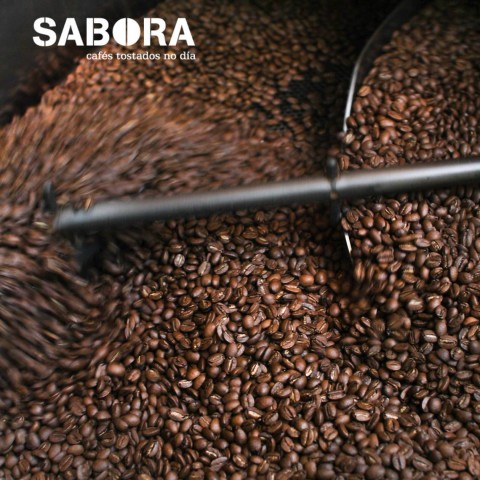Coffee roast
Roasting largely determines flavour, aroma and colour of coffee, once it has been served to customers in their cups.
Before reaching your cup, green coffee beans are transformed into roasted coffee beans through the roasting process.
For sure, you knew that, but maybe you do not know that the roasting process modifies the original features of green coffee beans, which turns into yellow and then into the characteristic “roasted” brown coffee beans.
Degrees of roast reflect coffee bean colour: dark roasts bring in darker beans and light roasts bring in different shades of brown.
Coffee flavour also varies according to roast since during the process aromatic oils are released enhancing the coffee flavour.
We really care roast process, type of coffee beans and origin, as these are the main things influencing coffee aroma and flavour.
Formerly, coffee roast used to be homemade using heaters, on the fire outside or even using a pan.
Nowadays, roasting has been industrialized and flavour is largely determined by the type.
Cafés Sabora always roasts moderate amounts of coffee, through a traditionally controlled process, in order to obtain the best results in the different coffee varieties.
- Light roast brings a soft-flavoured coffee.
- Medium roast brings a balanced flavour and good aroma and finally dark roast brings a strong and genuine coffee.
- It is up to coffee roasters give the final touch to bring out the best properties of the different types of coffee they are handling.
Degree of roast
Coffee tasters find on roast level one of the three basic properties to determine the quality of coffee, the other ones are acidity and the quality of the coffee itself.
Roast levels refer to the degree to which coffee beans are roasted. The excessive roast gives coffee a burnt taste whereas not enough roast may not bring out all properties of coffee beans.
Roasting is the most critical part of the production process of coffee, as the experience of the roaster determines that coffee beans release its distinctive flavour and aroma.
While other big companies in the industry have an automatic computer-controlled roasting process, Café Sabora opts for adding the experience of the coffee roasters in the process, since by valuing the human part let us bring out the best of each coffee bean.
We are totally sure that the expertise of a coffee roaster cannot be surpassed by computers.
This way, a good Arabica coffee should not be intense roasted, a light roast helps to preserve original properties of an aromatic and tasteful coffee. If we increase roasting level, bitterness will also increase and the final result will be ruined.

Roasting scale
There is not just one scale, in fact, there are many others, but we have chosen which we consider as an appropriate one:
Light or cinnamon roast
This is referred to as cinnamon because it is a very light roast in which bean gets a particular cinnamon colour.
It produces a high-caffeinated coffee with a clear acidic flavour, preserving very well the aroma and flavor characteristics of coffee.
American roast
Beans get a chestnut brown colour.
The roasting process results in an additional caramelized coating on the beans, compared to lighter roast, which gives coffee the particular caramel flavour of American roast.
Caffeine is also strongly present in this type of roast. It is commonly used in filter coffee machines at breakfast.
Medium to dark or Viennese roast
It results in a full-bodied coffee, strong aroma and a nearly sweet flavour.
Double roast, also known as continental or French roast.
It is a dark roast, very dark brown with an oily surface. French roast produces a brilliant black coffee due to its long roasting process, intense aroma and smoked flavour.
Italian roast
This is the most common degree of roast for gourmet coffee that will be prepared in espresso coffee makers.
The darkest roast gives the bean a very dark colour and a shiny oily surface, as essential oils of coffee are brought out through this degree of roast. Low level of caffeine.
Generally, darkest roast is commonly used in Spain, Italy or Portugal. Roast becomes lighter and coffee gets more acidic the further North of Europe we go.
The appropriate roast is chosen according to the variety of coffee and the intended use.
Coffee roast together to blend or no blend and bean quality are the three main elements influencing in the final result of coffee making.
As you can see, this is a complex but exiting issue. And you, how do you like coffee, lighter roast of maybe darker? Where have you taken the best coffee?
We are looking forward to your comments.
If you liked this post, please share it on social media, we really thank you.

